#a creative process
Explore tagged Tumblr posts
Text
Flying pigs and being human.
Knowing how you feel, what you think and being able to talk clearly about it is an important skill to cultivate. This is true for everyone and especially true for anyone trying to do anything creative. Creativity comes from a regular habit of observing the world and listening to yourself to your own thoughts and feelings. Creativity comes from trusting your own voice. Creativity comes from…
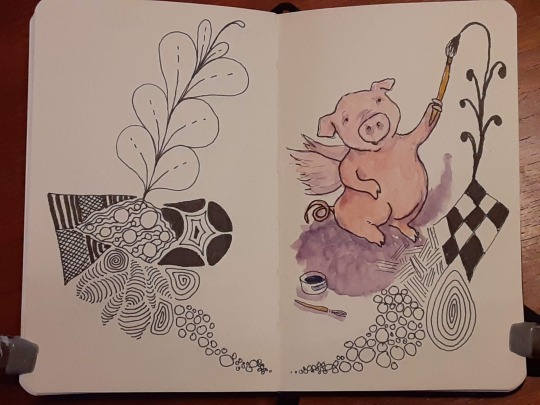
View On WordPress
#a creative life#a creative process#A.M. Sketching#books#Caplan Art Designs Gallery#coloring book page#creativity#email newsletter#environmentally friendly#independent bookstores#mental health#platforms#poetry#Powell&039;s#publishing#reading#relaxation#selfpublishing#Storyberries#Substack#Wordpress
1 note
·
View note
Text

the holy grail types of fanfic
#writerscommunity#enemies to lovers#creative writing#writers life#fanfiction#archive of our own#ao3#ao3 writer#ao3feed#ao3 fanfic#fiction writing#female writers#writers on tumblr#my fic#original story#original character#fanfic writing#femme fatale#fanfic#enemies to lovers trope#writing tropes#character tropes#dark romance#romance novels#novel writing#indie author#fiction#fanfic meme#writing memes#creative process
51K notes
·
View notes
Text
Anyone who's ever done anything creative needs to fucking see this.
#fandom#ao3 community#writing#artist on tumblr#writers of tumblr#writers on tumblr#artists on tumblr#creative writing#creative process#hobby#art#handmade#funny#true story#too real#too relatable#creative block#self love#self esteem#self appreciation#to be cringe is to be free#how to be an artist
51K notes
·
View notes
Text

current mantra
88K notes
·
View notes
Text
Honestly, I love it when characters relapse. When someone who’s gotten over their anger issues falls into a situation so out of their depth they fall back on their old habits. When someone who’s learned to open up becomes a recluse again in order to cope with something outside their control.
There’s just something so horrible, so toxic, about watching a character grow and then slip back into their old selves in order to cope, bc you know they still care, that they’re the same inside, but watching them hurt so hard they don’t know what else to do brings a sense of catharsis.
#writeblr#writing#writers on tumblr#writing community#creative writing#my writing#fanfic#fanfiction#one of those tropes that has to be played carefully tho#it’s important to show them wresting with it#and realizing what they’re doing#but being so lost in their pain they don’t know what to do#show they’re contrary feelings and that they’re still the same inside#it’s just a defense mechanism#also don’t make it seem like a flick of a switch#a slow process of relapse and a slow process of recovery from it is also important#not a plot twist for the sake of it#or played for drama#but a legitimate change with real consequences#just yappin#writing prompts#writing tropes#writing stuff#writing characters#characters#character arcs#oc stuff#tropes#trope talk
13K notes
·
View notes
Text
Writing Intimacy
i often see writers sharing a sentiment of struggling with writing kiss scenes which honestly bleeds into other portrayals of physical intimacy. i see it a lot in modernized styles of writing popularized by the recent trend in publishing to encourage short, choppy sentences and few adverbs, even less descriptive language. this makes intimacy come across awkward, like someone writing a script or clumsy recounting of events rather than a beautiful paragraph of human connection.
or just plane horniness. but hey, horny doesn't have to be mutually exclusive with poetic or sensual.
shallow example: they kissed desperately, tongues swirling and she moaned. it made her feel warm inside.
in depth example: she reached for the other woman slowly and with a small measure of uncertainty. the moment her fingers brushed the sharp, soft jaw of her companion, eliza's hesitance slid away. the first kiss was gentle when she finally closed the distance between them. she pressed her lips lightly to gabriella's in silent exploration. a tender question. gabriella answered by meeting her kiss with a firmer one of her own. eliza felt the woman's fingers curling into her umber hair, fingernails scraping along her scalp. everything inside eliza relaxed and the nervousness uncoiled from her gut. a warm buzz of energy sunk through her flesh down to the very core of her soul. this was right. this was always where she needed to be.
the first complaint i see regards discomfort in writing a kiss, feeling like one is intruding on the characters. the only way to get around this is to practice. anything that makes you uncomfortable in writing is something you should explore. writing is at its best when we are pushing the envelope of our own comfort zones. if it feels cringy, if it feels too intimate, too weird, too intrusive, good. do it anyway! try different styles, practice it, think about which parts of it make you balk the most and then explore that, dissect it and dive into getting comfortable with the portrayal of human connection.
of course the biggest part comes to not knowing what to say other than "they kissed" or, of course, the tried and true "their lips crashed and their tongues battled for dominance" 😐. so this is my best advice: think beyond the mouth. okay, we know their mouths are mashing. but what are their hands doing? are they touching one another's hair? are they scratching or gripping desperately at one another? are they gliding their hands along each other's body or are they wrapping their arms tightly to hold each other close? do they sigh? do they groan? do they relax? do they tense? are they comfortable with each other or giddy and uncertain? is it a relief, or is it bringing more questions? is it building tension or finally breaking it?
get descriptive with the emotions. how is it making the main character/pov holder feel? how are they carrying those emotions in their body? how do they feel the desire in their body? desire is not just felt below the belt. it's in the gut, it's in the chest, it's in the flushing of cheeks, the chills beneath the skin, the goosebumps over the surface of the flesh. everyone has different pleasure zones. a kiss might not always lead desire for overtly sexual touches. a kiss might lead to the desire for an embrace. a kiss might lead to the impulse to bite or lick at other areas. a kiss could awaken desire to be caressed or caress the neck, the shoulder, the back, the arms etc. describe that desire, show those impulses of pleasure and affection.
of course there is the tactile. what does the love interest taste like? what do they smell like? how do they kiss? rough and greedy? slow and sensual? explorative and hesitant? expertly or clumsily? how does it feel to be kissed by them? how does it feel to kiss them?
i.e. examine who these individuals are, what their motives and feelings are within that moment, who they are together, what it looks like when these two individuals come together. a kiss is not about the mouth. it's about opening the door to vulnerability and desire in one's entire body and soul.
#writing help#writing tips#writing advice#how to write#on writing#fanfic advice#writing#creative writing#writing process#roleplay advice#rp advice#rp tips#*shrugs* twitter discourse brought me here
12K notes
·
View notes
Text
This is a friendly reminder to give your OC a firm and unmistakable L every now and then.
This is a necessary action to keep your OC healthy for the long term.
#oc#oc writing#oc wip#writing advice#writing process#creative writing#writers on tumblr#writing#writers#writers on ao3#ao3#writeblr#writing community#writing help
28K notes
·
View notes
Text
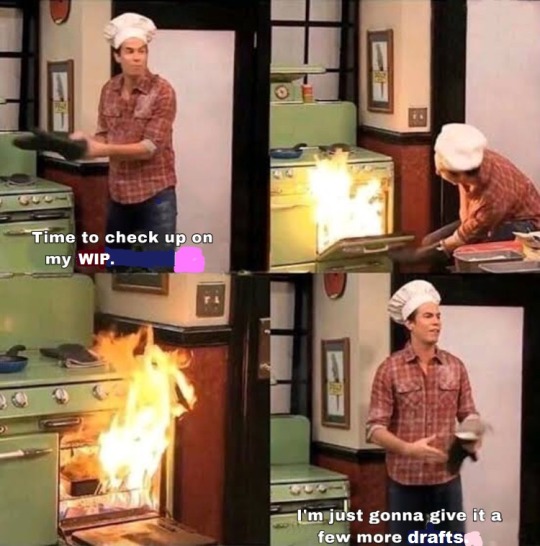
#writblr#writers on tumblr#writing community#writers of tumblr#WIPs#creative writing#writer#writers#writeblr#writing problems#writing process#writing meme#writing memes#queue
9K notes
·
View notes
Text

#story ideas#brainstorming#talking about writing#on writing#vibes only#the writing process#creative writing#life of a writer#compels me though#memes#writing memes#writing humor#writer problems
7K notes
·
View notes
Text
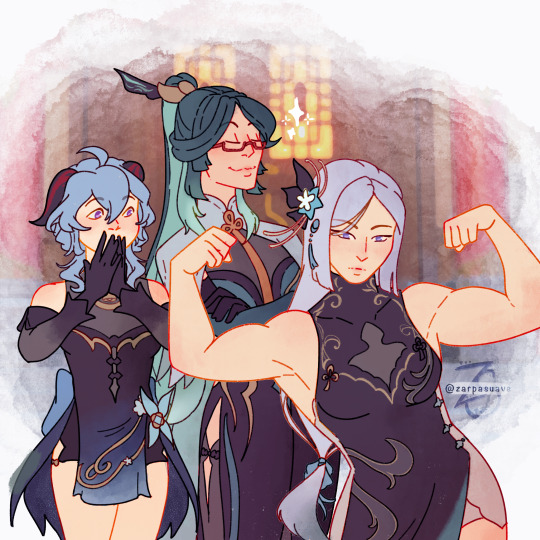
🏮✨Xianyun giving her daughters pretty dresses so they can flex those muscles das right.
Based on this🤭:
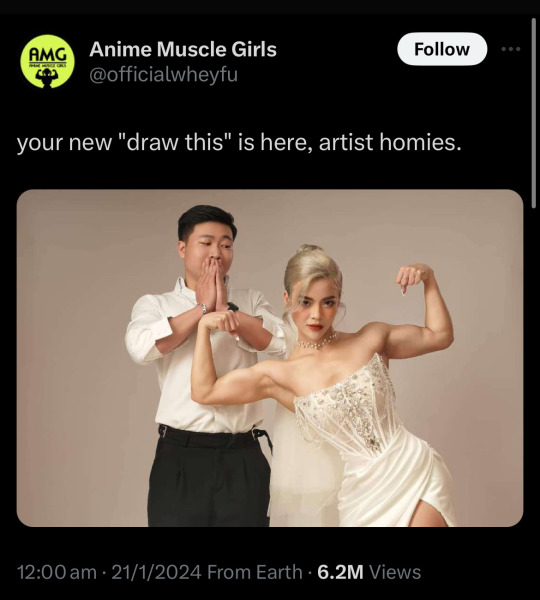
#genshin impact#genshin#Shenhe#Xianyun#Ganyu#thinking of doing part 2#👀#lantern rite#Genshin 4.4#my art#look I gave up toward the end that’s my creative process
12K notes
·
View notes
Text
Writing Character Accents in Fiction
Hey there, thanks for the question! I speak English as a second language; most English speakers I encounter aren’t native (yes, including fictional people); thus, this is a concern I’ve explored personally when I write.
I think the core principle regarding accent writing is this: it shouldn’t be distracting.
For the same reasons why Stephen King prescribes the basic dialogue tag “said” rather than fancier alternatives like “whispered”, “shouted” or “screeched”, dialogue must be first and foremost easy to read. It must flow like a real conversation – the pace and tone are a lot more important than how specific words are being pronounced by the character.
Focus on what effect the accent has:
Using adjectives to describe their voice in general. Different types of English (American, British, Australian, etc.) will give off a different vibe, also partly dependent on how your character speaks in general:
Lilting: Having a smooth rise and falling quality; sing-song like. Welsh accent is often described as singing.
Posh: from a high social class. This is the term generally used to describe the upper-class British accent.
Nasal: this happens when the sound goes through somebody’s nose when they’re speaking. North American accents are more nasal than, say, British pronunciations.
Brash: harsh, loud, indicative of sounding a little rude.
Slur: speaking indistinctly; words merging into one another.
Using metaphors.
Her voice was cotton and fluffy clouds.
When he spoke, the ‘r’s scratched the insides of his throat.
Mentioning their accent with a brief example(s).
“Would you like to drink some wine?” she said, though her Indian accent gave extra vibration to her ‘w’s and ‘r’s, making the words sound more like ‘vould you like to drrrink some vine’.
“I want some chocolate.” His syllables were choppy and ‘l’s rather flat, saying ‘cho-ko-lit’.
Some Tips:
Don’t phonically spell out everything. Perhaps give a few examples in the beginning, but stick to standard English spellings.
Pay attention to word choice, slang, and colloquialisms.
An Australian person would say “tram”, not “trolley; “runners” instead of “sneakers”
A Canadian may refer to a “fire hall” – what Americans call a firehouse or fire station
If your character comes from a non-Enligsh background:
Use vocabulary from other languages.
“What time was the exam, ah? Two o’clock? Jiayou!” → putting “ah” or “la” at the end of sentences + Jiayou means “break a leg” in Singlish.
“I can’t believe that 4-year-olds have their own SNS accounts now.” → “SNS” is short for “social networking service”, a term used to refer to social media in Korea. This would a subtle difference – even though it isn’t technically Korean at all!
Transpose grammar from different languages.
For example, in French, plural nouns take plural adjectives (whereas in English, you would speak of ‘white cars’, not ‘whites cars’).
─── ・ 。゚☆: *.☽ .* . ───
💎If you like my blog, buy me a coffee☕ and find me on instagram! Also, join my Tumblr writing community for some more fun.
💎Before you ask, check out my masterpost part 1 and part 2
#writers and poets#writers on tumblr#writing#helping writers#creative writing#let's write#creative writers#poets and writers#writeblr#resources for writers#ask blog#ask me anything#answered asks#writing process#writing advice#writing inspiration#writing community#writer#writerscommunity
3K notes
·
View notes
Text
Eggheads forum
As I’ve worked on my Eggheads sculpture – hand painting heads on 12 solid wood eggs and bodies on 12 solid wood egg cups – I thought about how smart people are as essential to society as a eggs are to a working kitchen. In the background of my thinking was a question of how to display my finished 24 piece sculpture. My one-person exhibit at the Caplan Art Designs Gallery opens Oct 3 and the…

View On WordPress
#3d art#3d sculpture#a creative life#a creative process#art exhibit#art inspiration#Caplan Art Designs Gallery#conversations#Eggheads#fineart#miniatures#one person art exhibit#whimsical art
0 notes
Text
*writes two paragraphs after months of literally nothing and it took three hours*
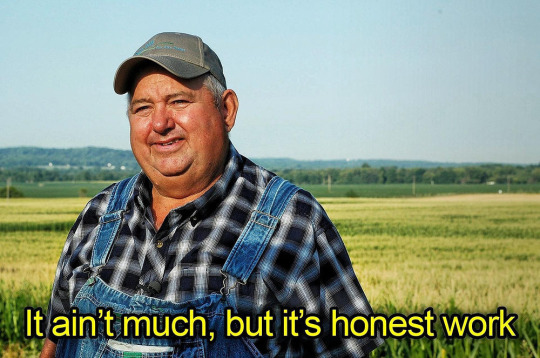
#theaftersundown#writers on tumblr#creative writing#novel writing#writerscommunity#female writers#fanfiction#artists on tumblr#archive of our own#romance novels#graphic novel#writers block#writing memes#writing motivation#aspiring writer#writers of tumblr#ao3 writer#writeblr#writers and poets#amwriting#ao3#fiction writing#currently reading#books and reading#book blog#writing life#writing prompt#creative process#ao3feed#ao3 fanfic
29K notes
·
View notes
Text
“…I believe life is a continuum, and that no one really dies, they just drop their physical body and we'll all meet again, like the song says. It's sad but it's not devastating if you think like that. Otherwise I don't see how anybody could ever, once they see someone die, that they'd just disappear forever and that's what we're all bound to do. I'm sorry but it just doesn't make any sense, it's a continuum, and we're all going to be fine at the end of the story.”
David Lynch & Matthew Sweet
2K notes
·
View notes
Text

Dragon!
#liteeart#1114#november 2024#dragon#sona#furry#took a break for the month of september#but im back in the creative process!
2K notes
·
View notes
Text
Creating Emotionally Devastating Scenes.
Crafting a scene that earns the total sympathy of your readers can be challenging, but it's not impossible. Most emotionally devastating scenes fail at two things, but when these are done right, the results can be powerful.
⚪ The Important Concepts for Writing an Emotionally Devastating Scene
1. The Build-Up,
2. Breaking the Dam.
Before I explain these concepts, let me share a case study.
⚫ Case Study
I wrote a story about a young orphan named Jackie and her younger brother. Their village was burned down, leaving them as the only survivors.
For the next few chapters, readers followed their painful journey and their struggle to survive. The younger brother had a heart problem, and Jackie vowed to become a cardiologist to save him.
She was very ambitious about it, but at the time, it was very ironic. Later in the story, when they encountered a tragic living condition with a family, the brother died while telling his sister how much he missed their parents.
When her brother was fighting for his life, she was sent out of the room, only to be let in again to see his cold, lifeless body.
⚪ Explanation of Concepts
1. The Build-Up
The build-up is extremely important when you aim to convey strong emotions. Here's a secret: if you plan for a scene with strong emotions, start leaving breadcrumbs from the very beginning of the story.
Take the previous case study. I carefully built up their journey so people could easily relate and feel the pain of the older sister during her brother's sudden death.
You need to give the situation enough reason to feel utterly hopeless and devastating. Gradually cultivate the tension until it's ready to let loose.
⚫ Understanding the Use of Breadcrumbs.
Breadcrumbs in stories ensure you utilize the time you have to build up certain emotions around your characters.
At the beginning of my story, Jackie’s fate was already pitiable, but she survived every hurdle. This gave the readers enough to feel for her while still leaning away from the outcome. When I built enough, I introduced her brother's sudden death.
Hence, leave your breadcrumbs while leaning away from the outcome.
⚪ How to Properly Leave Breadcrumbs
When building up your story, consider these elements:
☞ Character Relatability: The characters need to be realistic to draw readers into the story. This helps readers invest themselves in your story.
☞ Realistic Emotional Pain: Just as characters need to be relatable, their emotions need to be realistic and not appear forced.
☞ Create a Strong Emotional Attachment: Give them something they care about or that has the power to ruin their lives in any way. It could be something that makes them happy or something their happiness relies on. When it's time, snatch it away without remorse.
☞ Have a Backstage Struggle: This struggle keeps readers occupied, so they won't see the outcome coming. For example, Jackie’s constant struggle to find food and shelter keeps readers engaged while the impending tragedy looms in the background.
☞ Attach Believable Elements: For a realistic character, emotion, and struggle, attach believable elements. It could be death, ailments, sickness, disorder, disappointment, failure, etc.
Now that we've covered the build-up, let's move on to the next crucial part.
2. Breaking the Dam
This is when you make your readers feel the strong emotions alongside your characters. All the tension you’ve been building up is released, making all emotions come into play.
☞ Break Your Strong Attachment: Cut off your strong attachment from your character when they least expect it or at a point when they couldn't use more struggles (i.e when they are helpless).
This will not only evoke readers’ emotions but also pique their curiosity as they wonder how the character will survive the situation.
☞ Description of Sensory Details to Invoke Emotions: The advice of "show, don't tell" will be really helpful here. It's crucial to ensure that the final execution matches the build-up.
A well-crafted build-up can fall flat if the emotional release isn't handled effectively. To avoid this, blend the climax seamlessly into the narrative, making it feel natural and impactful.
Reblog to save for reference! 💜
#writing#writeblr#writers on tumblr#writer#writers and poets#writerscommunity#writing community#wattpad#ao3 writer#a03 writer#writers of tumblr#aspiring author#aspiring writer#writing advice#writing blog#creative writing#writing discussion#writing encouragement#writing guide#writing help#writing ideas#writing journey#writing life#writing motivation#writing novels#writing on ao3#writing process#writing resources#writing reference#writing requests
2K notes
·
View notes